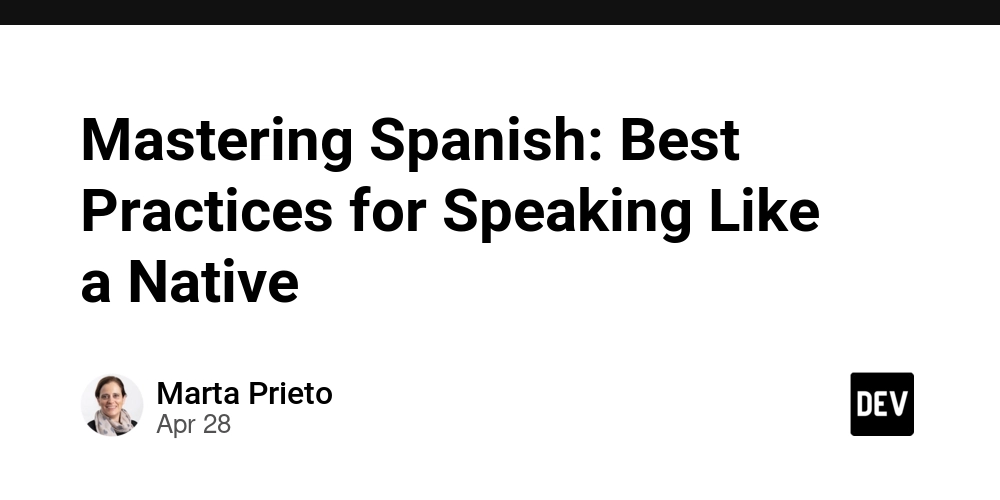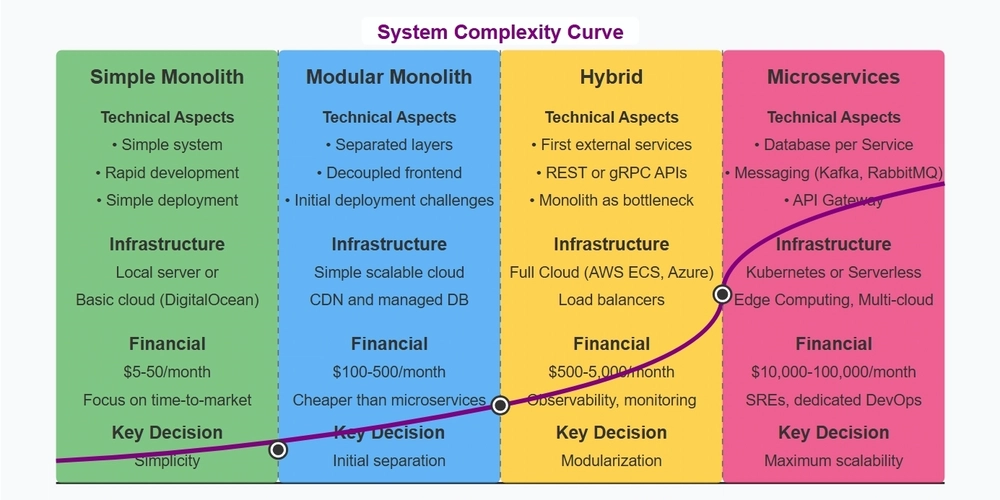Mastering Spanish: Best Practices for Speaking Like a Native
Introduction Learning to speak like a native in any language is a dream for most language learners. The best way to learn Spanish is to immerse yourself in the culture and interact with native speakers. Fluency takes dedication, consistent effort, and time. TNo quick shortcuts exist to speaking like a native Spanish speaker. A skilled native teacher can make the journey more fun. This article explains why native speakers are vital for studying español.They help learners achieve fluency. Build Language skills and Speak Naturally A major advantage of learning from a native speaker is their ability to teach authentic vocabulary and phrases. Textbooks and courses may teach grammar and formal speech. But, they lack native speakers’ depth in learning. They introduce you to idioms, slang, and colloquial expressions commonly used in Spanish countries. A phrase that looks simple in a book might have a deeper or even funny meaning in real-life conversation. Native teachers provide essential context, helping learners use the right words in the right situations. Moreover, their fluency in español allows them to model correct pronunciation effortlessly. Research shows that native speakers excel at teaching their language’s rhythm, tone, and nuances. These can be hard for learners to pick up from non-native instructors. Practice is Key One of the biggest mistakes language learners make is avoiding speaking out of fear of making mistakes. Feeling shy at first is normal, but holding back slows your progress.To truly learn español, you need to practice speaking as much as possible. Native speakers provide a supportive and authentic environment for learners to practice conversations. They can help you with everything from pronunciation to everyday phrases, ensuring that you build confidence along the way. Once you’re comfortable speaking with someone from Spanish-speaking countries, it becomes much easier to communicate in español. This is true whether you’re traveling or using it daily. Speaking regularly with a native speaker also helps bridge the gap between academic language and real-world communication. In Spanish countries, locals often speak faster. They also use expressions not in traditional learning materials Understanding Culture and Context To truly master Spanish, you must dive into the culture of Spanish-speaking communities. Language is not just a collection of words and grammar rules; it’s a reflection of how people live, interact, and express themselves. For example, in many Spanish countries, cultural norms influence how people communicate. Spanish speakers are often more direct than English speakers, which can seem abrupt if you’re unfamiliar with the culture. People use words like “please” and “thank you” less, but this doesn’t mean they’re rude — it’s just the culture. Body language is another essential part of communication in español. Gestures, tone of voice, and facial expressions play a significant role in how messages are conveyed. Native speakers can teach you these subtle cultural elements that are impossible to learn from a book. Also, talking with native speakers lets you enjoy their vibrant traditions. These include their love of food, music, and socializing. These insights help you connect on a deeper level, making your conversations more natural and meaningful. Ensuring Accuracy Native speakers are the ultimate authority on their own language. They’ve spoken it since birth, which means they intuitively understand its nuances, rhythms, and subtleties. A native teacher will ensure your español is accurate and reliable. Mistakes are a part of learning any new skill. But, native speakers quickly spot and correct errors. This helps you build a strong foundation. Choosing the right verb tense, or learning how to structure sentences ensures that you develop good habits from the start. Accuracy is especially important when communicating with people from different Spanish-speaking countries, as regional variations exist in vocabulary, pronunciation, and expressions. For instance, a word used in Mexico might mean something else in Spain or Argentina. Native speakers can help you navigate these differences, ensuring you use the right words for the right audience. Practical Tips for Learning Spanish Now that we’ve established the importance of learning from native speakers, here are some actionable steps you can take to enhance your skills: Conclusion Learning to speak español like a native requires more than memorizing vocabulary and grammar rules. Immerse yourself in the language, engage with native speakers, and understand the culture behind the words. Native teachers help learners master pronunciation, use vocabulary naturally, and build confidence. They make the language come alive with insights beyond textbooks. Practice regularly, listen to the language, and embrace the culture of Spanish-speaking countries to make steady progress. Whether you want to travel, connect with

Introduction
Learning to speak like a native in any language is a dream for most language learners. The best way to learn Spanish is to immerse yourself in the culture and interact with native speakers. Fluency takes dedication, consistent effort, and time.
TNo quick shortcuts exist to speaking like a native Spanish speaker. A skilled native teacher can make the journey more fun. This article explains why native speakers are vital for studying español.They help learners achieve fluency.
Build Language skills and Speak Naturally
A major advantage of learning from a native speaker is their ability to teach authentic vocabulary and phrases. Textbooks and courses may teach grammar and formal speech. But, they lack native speakers’ depth in learning.
They introduce you to idioms, slang, and colloquial expressions commonly used in Spanish countries. A phrase that looks simple in a book might have a deeper or even funny meaning in real-life conversation. Native teachers provide essential context, helping learners use the right words in the right situations.
Moreover, their fluency in español allows them to model correct pronunciation effortlessly. Research shows that native speakers excel at teaching their language’s rhythm, tone, and nuances. These can be hard for learners to pick up from non-native instructors.
Practice is Key
One of the biggest mistakes language learners make is avoiding speaking out of fear of making mistakes. Feeling shy at first is normal, but holding back slows your progress.To truly learn español, you need to practice speaking as much as possible.
Native speakers provide a supportive and authentic environment for learners to practice conversations. They can help you with everything from pronunciation to everyday phrases, ensuring that you build confidence along the way. Once you’re comfortable speaking with someone from Spanish-speaking countries, it becomes much easier to communicate in español. This is true whether you’re traveling or using it daily.
Speaking regularly with a native speaker also helps bridge the gap between academic language and real-world communication. In Spanish countries, locals often speak faster. They also use expressions not in traditional learning materials
Understanding Culture and Context
To truly master Spanish, you must dive into the culture of Spanish-speaking communities. Language is not just a collection of words and grammar rules; it’s a reflection of how people live, interact, and express themselves.
For example, in many Spanish countries, cultural norms influence how people communicate. Spanish speakers are often more direct than English speakers, which can seem abrupt if you’re unfamiliar with the culture. People use words like “please” and “thank you” less, but this doesn’t mean they’re rude — it’s just the culture.
Body language is another essential part of communication in español. Gestures, tone of voice, and facial expressions play a significant role in how messages are conveyed. Native speakers can teach you these subtle cultural elements that are impossible to learn from a book.
Also, talking with native speakers lets you enjoy their vibrant traditions. These include their love of food, music, and socializing. These insights help you connect on a deeper level, making your conversations more natural and meaningful.
Ensuring Accuracy
Native speakers are the ultimate authority on their own language. They’ve spoken it since birth, which means they intuitively understand its nuances, rhythms, and subtleties. A native teacher will ensure your español is accurate and reliable.
Mistakes are a part of learning any new skill. But, native speakers quickly spot and correct errors. This helps you build a strong foundation. Choosing the right verb tense, or learning how to structure sentences ensures that you develop good habits from the start.
Accuracy is especially important when communicating with people from different Spanish-speaking countries, as regional variations exist in vocabulary, pronunciation, and expressions. For instance, a word used in Mexico might mean something else in Spain or Argentina. Native speakers can help you navigate these differences, ensuring you use the right words for the right audience.
Practical Tips for Learning Spanish
Now that we’ve established the importance of learning from native speakers, here are some actionable steps you can take to enhance your skills:
Conclusion
Learning to speak español like a native requires more than memorizing vocabulary and grammar rules. Immerse yourself in the language, engage with native speakers, and understand the culture behind the words.
Native teachers help learners master pronunciation, use vocabulary naturally, and build confidence. They make the language come alive with insights beyond textbooks.
Practice regularly, listen to the language, and embrace the culture of Spanish-speaking countries to make steady progress. Whether you want to travel, connect with others, or boost your career, learning español opens many doors.
So, take the first step today — find a native speaker, immerse yourself in the culture, and start practicing. Before you know it, you’ll be speaking like a native and experiencing the beauty of español in a whole new way.









































































